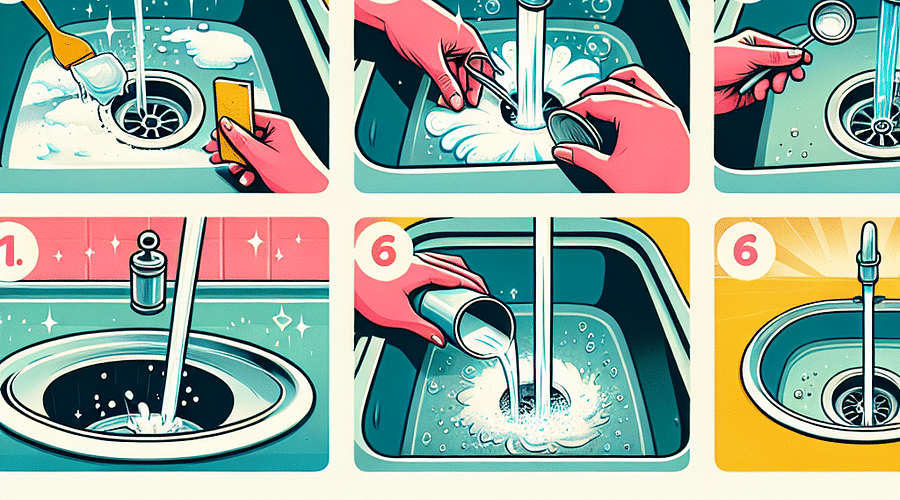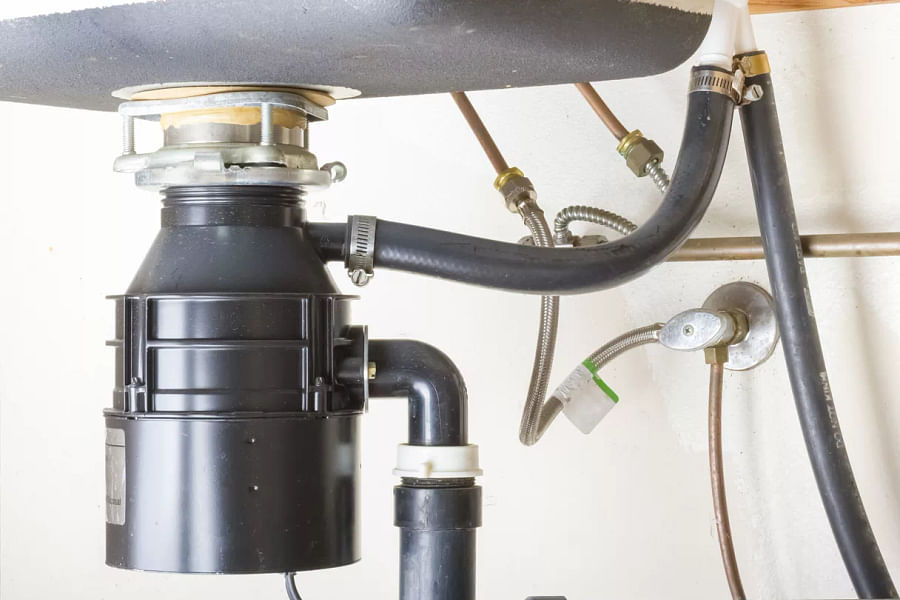Kitchen Sink Drain Detox: Your Go-To Guide for a Clog-Free and Fresh-Smelling Sink

The kitchen sink drain might not be the most glamorous part of your home, but it's undoubtedly a critical battleground in the perpetual war against grime and odors. A clog-free and fresh-smelling sink is not just a matter of household aesthetics; it's a testament to the health and hygiene of your culinary sanctuary. So, let's roll up those sleeves and dive into the nitty-gritty of kitchen sink detox—a process that, when done right, can be oddly satisfying.
Before we tackle the cleaning process, it's important to understand what you're up against. Your kitchen sink drain is more than just a channel for water—it's a complex ecosystem that includes everything from food particles and grease to soap scum and mineral buildup. This concoction can lead to unpleasant smells and stubborn clogs if not addressed properly. To get started on the right foot, familiarize yourself with some effective methods to keep your kitchen sink drain sparkling clean.
Now that you've got a lay of the land, let's delve deeper into what really causes those pesky clogs. Food waste is often the primary culprit—especially when it comes to materials like cooking oils and fats that solidify inside pipes. But don't underestimate other offenders like coffee grounds or fibrous vegetable peels that can easily become lodged in your plumbing. For those interested in preventing such mishaps, consider exploring our step-by-step guide to DIY grease trap cleaning.










Maintaining a regular cleaning schedule for your kitchen sink drain isn't just about keeping things smelling fresh; it's also about prolonging the life of your plumbing. Simple habits like running hot water through the drain after each use or using a mesh strainer can go a long way in preventing blockages. And for those moments when you need an extra hand in deciphering common issues, our interactive quiz on common bathroom sink drain issues may offer some enlightening parallels.
When it comes to natural cleaning solutions, baking soda and vinegar are akin to the dynamic duo of home hygiene. This powerful combination can work wonders on your drain, cutting through grime and neutralizing odors without harsh chemicals. To see this remedy in action, check out our step-by-step guide, where we break down how this fizzy concoction can rejuvenate your kitchen sink.
If you've ever caught a whiff of something foul emanating from your sink despite regular cleaning, you're not alone. Over time, bacteria can colonize in hard-to-reach areas of your drainpipes or garbage disposal blades, leading to persistent odors that simple rinsing won't resolve. For comprehensive instructions on banishing these unwanted scents from your garbage disposal unit as well as your washing machine, take a look at our guide on how to clean these appliances effectively.










In conclusion (for this half), let me emphasize that while we've covered several proactive measures you can take towards maintaining a pristine kitchen sink drain environment, sometimes professional intervention is needed—especially when facing relentless clogs or deep-seated odors. When do-it-yourself efforts fall short, don't hesitate to seek out expert advice or services as detailed in our article on grease trap cleaning DIY tips, including when it's time to call in the professionals.
Regular maintenance is key to keeping your kitchen sink drain in top condition. You don't need to wait for a clog or bad smell to take action. By incorporating a few simple habits into your routine, you can prevent issues from arising and ensure your sink remains fresh and free-flowing.
Firstly, make it a habit to run hot water through the drain after each use. This helps to clear out any remaining food particles or grease that could build up over time. Additionally, throwing a handful of baking soda into the drain, followed by hot water, can be a great weekly practice. Baking soda is a natural cleaning agent that helps absorb odors and minor blockages before they become problematic.
It's also wise to use sink strainers to catch food scraps and other debris that could potentially lead to clogs. Cleaning these strainers regularly is as important as the maintenance steps you take with the drain itself.
For those who prefer eco-friendly cleaning solutions, harnessing the power of natural ingredients is not only effective but also gentle on your pipes and septic systems. A combination of vinegar and baking soda can work wonders for deep cleaning without the harsh chemicals found in commercial cleaners.
This fizzy duo creates an effervescent reaction that can help dislodge any grime clinging to your pipes. Simply pour half a cup of baking soda down the drain followed by half a cup of white vinegar. Cover with a plug or damp cloth for about 15 minutes, then flush thoroughly with boiling water.
If you're dealing with persistent odors or minor clogs, consider using enzymatic cleaners as part of your monthly kitchen sink detox routine. These bio-based cleaners break down organic matter safely and effectively—ideal for maintenance without risking damage to your plumbing.
Sometimes, despite our best efforts, professional intervention may be necessary. If you've tried all the DIY methods without success, it might be time to call in the experts. Persistent clogs could indicate deeper issues such as pipe damage or significant blockages that require specialized tools and knowledge.
It's important not to overuse chemical drain cleaners as they can corrode pipes over time, leading to bigger problems than just clogs. If you're unsure about what steps to take next, check out our guide on when DIY isn't cutting it anymore.
In addition, if you're noticing similar issues in other parts of your home such as bathroom sinks or showers, explore our comprehensive resources like effective cleaning tips for bathroom sink drains, or take our quiz on common bathroom sink drain issues to expand your maintenance know-how across all plumbing fixtures.
Remember: Regular care prevents repair! Keep up with routine maintenance and use gentle cleaning methods whenever possible.
Maintaining a clean and functional kitchen sink drain isn't just about avoiding inconveniences; it's about creating a hygienic space where culinary magic happens. As someone who has spent years in professional kitchens, I understand how crucial it is to have every component working seamlessly—including the humble sink drain.
To ensure you're equipped with all the necessary tools and knowledge for this task, I've curated a selection of products designed specifically for kitchen cleanliness:
Incorporating these products into your cleaning routine will support both the environment and the longevity of your plumbing system. And remember, if you're battling greasy build-up beyond the kitchen sink—perhaps in grease traps or garbage disposals—be sure to read our guides on how to tackle those tricky areas effectively at grease trap cleaning and eliminating odors from garbage disposals.
Maintaining a fresh-smelling and clog-free kitchen sink is an ongoing commitment but one that pays off in spades when it comes time to cook up something special in a clean environment free from unwanted smells or drainage woes. With these tips and tricks up your sleeve, you'll be well on your way to achieving just that—a sparkling clean heart of the home where creativity flows as smoothly as your well-maintained drains.
Post a comment